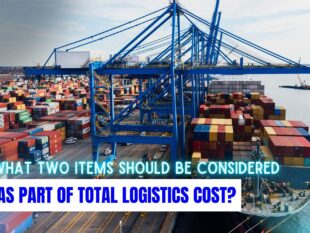Corporate Tax Planning: Best Ways to Manage and Reduce Your Taxes
by Abdul Aziz Mondal Financial Planning 31 July 2024

Remember how when we were little, we noticed our parents trying to find ways to reduce the amount of tax we could pay? Similarly, corporate tax planning allows corporations to pay the least tax possible. It uses the techniques to reduce the taxes a company owes legally.
Don’t worry. When I asked you to reminisce, I referred to the legal ways our parents did it. A commoner does just that – find legal ways to reduce the tax they owe. Moreover, corporation tax-management is also known as business tax planning.
This helps the company increase its profits, thereby helping it sustain itself. The following sections will investigate the different ways a corporation does that.
What Is Corporate Tax Planning?

The different laws worldwide require domestic and international companies to pay tax on their profit in a financial year. A high income tax planning implies the company’s systematic approach to reduce its tax liabilities legally.
This is corporate tax planning which helps them preserve the profits for further investment. Moreover, these strategies ensure you are on the right side of the law, avoiding legal troubles or penalties.
In the U.S., the federal corporate tax rate is 21%, where states may also impose separate corporate taxes on corporations. The U.S. tax reform legislation was enacted on 22 December 2017.
It moved the United States to a ‘territorial’ taxation system from a worldwide system. The CIT rate on resident corporations was also permanently reduced from 35% to 21% for tax years beginning after 31 December 2017.
Before P.L. 115-97 was enacted, a non-US corporation engaging in a U.S. business or trade was under a hefty 35% US CIT rate. That is, on income from U.S. sources or 35% of CIT rate on ECI – the effectively connected income.
Thus, after the enactment, the change in the tax regime was quite significant. However, some US-source income, such as royalties, dividends, and non-ECI interest, continue to be taxed at 30%. This is subject to change if there is a treaty involved.
Why Is Corporate Tax Planning Necessary?

Tax planning is necessary to run a successful business. A corporation can only run if there are funds to sustain its functioning. There are expansions and strategies to stay relevant that need implementation and resources. So, where does the money come from?
Ideally, a corporation should have enough money from its business to sustain itself. However, it is impossible unless you start a side business as an investment for your primary one. That’s for another blog to dissect.
A company is said to be profitable only after it has money left after paying for the business expenses. And that can come from various methods, including legal tax planning strategies. This way, you have sufficient funds to invest in your business or carry out activities that can sustain it.
Now, as a business, it is wise to know the different taxes you are liable for and strategies to reduce these to the least possible amount. Don’t worry if you do not have a CFO to handle all these; we will guide you through them.
Different Taxes for Corporations

The following taxes are necessary to know for businesses and corporations. Therefore, sit tight as we take you on an educative journey to learn about taxes
State and local income taxes
Corporate income tax of CIT varies from state to state, especially in the U.S. It can range from 1% to 12%. However, some states do not impose any income tax. The most common taxable base is federal taxable income, which gets modified as per state provisions.
There is an apportionment formula that allows states to fix a taxable base. The formula consists of one or more of the following factors:
- Rental expenses and tangible assets
- Sales and other receipts
- Payroll
However, you might be relieved that most states are moving away from a three-factor formula. So, how will it be apportioned? Businesses are going to adopt a one-factor receipt apportionment methodology.
Base erosion and anti-abuse tax (BEAT)
P.L. 115-97 also introduced a new U.S. federal tax called “Base erosion and anti-abuse tax,” abbreviated as BEAT. No, it does beat the profits of a corporation if that’s what you think at first glance.
This tax targets U.S. tax-base erosion by imposing corporate tax liability on corporations. This excludes regulated investment companies, real estate investment trusts, and S corporations (discussed later).
BEAT works like a minimum tax; corporations pay BEAT only when the ordinary corporate income tax liability exceeds. The BEAT for a company is equivalent to 10% of the modified taxable income minus the regular CIT.
This helps prevent the exploitation by multinational corporations to avoid paying taxes.
S corporations
Corporations with 100 or fewer eligible shareholders (who are not corporations) can elect to be taxed under Subchapter S. This is when they meet specific Internal Revenue Code or IRC criteria.
The S corporations are taxed like partnerships – all tax items, such as deductions and income, flow through to the entity’s owners. Thus, S corporations are not subject to U.S. federal income tax.
Gross transportation income taxes
Foreign corporations and non-resident alien individuals are subject to a 4% annual tax on their US-source gross transportation income or USSGTI. This income has an exception for certain income that is effectively connected with a U.S. business or trade.
Transportation income is any income that derives from or is in connection with:
- The use of a vessel or aircraft. It can also be hiring or leasing
- The performance of services directly concerning the use of a vessel or aircraft
Alternative minimum tax or AMT
The Inflation Reduction Act, P.L. 117-169 introduced a new corporate minimum tax effective for tax years that began after 2022. This is based on the financial statement income or corporate alternative minimum tax.
AMT determines whether a corporation is subject to tax and the amount of tax. A taxpayer is an applicable corporation if the average annual AFSI over a three-tax-year period is more than USD 1 billion.
Now that we know the different taxes, we as a business should know them. Let’s note the corporate tax planning and management strategies.
Top 4 Corporate Tax Planning Strategies You Should Know!

Corporate tax professionals often face significant changes in corporate taxation across state, federal, and international jurisdictions. Thus, it is imperative that businesses can run smoothly without significant financial barriers due to taxes.
The following strategies will help you, even if you are looking for small business tax tips to save money. Check these out:
1. Time and shift your income and expenses
One of the first pieces of advice any financial officer would provide you with is strategically timing the income recognition. It also entails transferring income to different tax periods or entities.
lowering the tax obligations is immensely helpful. For instance, you can postpone income to a subsequent tax year or allocate it to family members. You can also allocate it to associated entities in lower tax brackets.
2. Take advantage of business tax deductions
As a business, you are in an advantageous position to lower your overall tax burden in simple steps. You can carefully analyze the eligible expenses and business-related costs, such as employee benefits and charitable contributions, to claim deductions.
3. Optimize your business entity structure
Choose an appropriate business structure – whether it’s a sole proprietorship, partnership, or limited liability company (LLC.) Any of these business structures will considerably affect the tax responsibilities.
All three structures have their advantages and disadvantages. However, out of these, the best for tax purposes would be – sole proprietorship. This is because the business earnings are treated as personal income, which allows them to enjoy lower taxes.
Hire tax professionals
This must be one of the most important ways to preserve your money for investments. Tax professionals have extensive knowledge that helps you avoid tax issues. Experts include tax attorneys, certified public accountants, or CPAs.
They will assist you in ensuring compliance and minimizing tax liabilities.
Bonus!
Wondering how to avoid capital gains taxes on stocks? Capital gains taxes are owed when you sell an asset for profit. The tax rates vary depending on how long you hold the stocks. Selling it for a loss does not result in you owing taxes on the transaction.
Here are a few hacks to avoid capital gains taxes on stocks:
- Invest in the long term. This will help you benefit from long-term capital gains rates.
- Pick your cost basis when selling stocks by handpicking the individual shares. This will help you avoid capital gains taxes by selling shares at a loss.
- Contribute to retirement accounts as they eliminate capital gains taxes on your portfolio. Buying and selling bonds, stocks, and other assets that do not trigger capital gains taxes.
Conclusion
Corporate tax planning will help you arrange your company’s financial affairs so that you can reduce the tax burdens. There are three most popular types of tax planning: long-term tax planning, short-term tax planning, and permissive tax planning.
Which strategy do you think works best for a company? Does your company follow these? Tell us in the comments below.
Additional Reading:



































































































